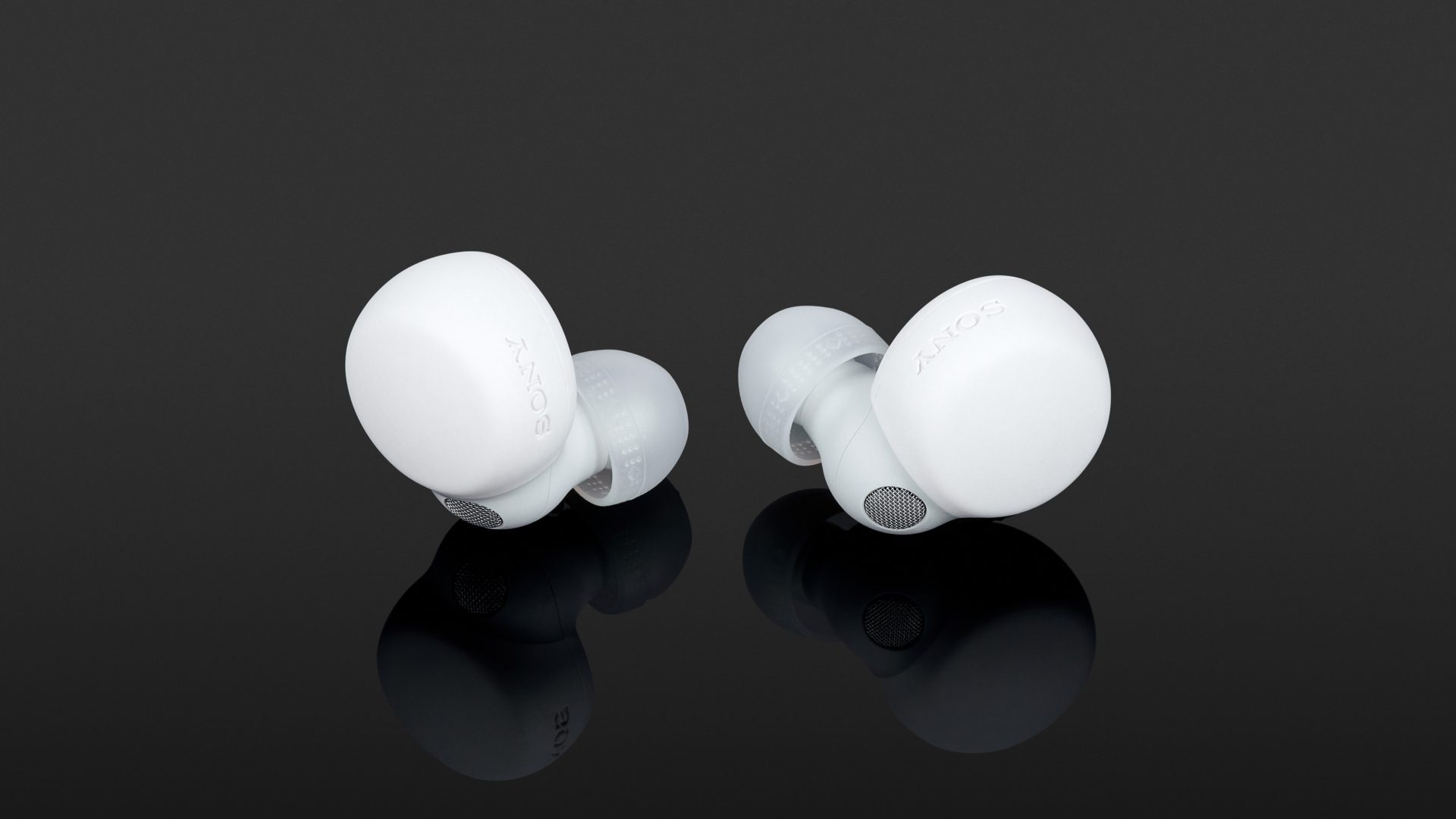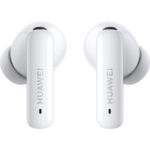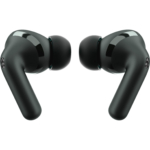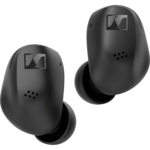The Sony LinkBuds S are remarkable headphones: Not only do they feel contemporary in terms of manufacture and design, but you’ll look in vain for comparable extensive features from other models in the 200-euro range. It’s not just the wearing comfort of the extremely small and light True Wireless In-Ears that is convincing, the noise cancelling and the transparency mode, including additional functions, are also practical and leave hardly anything to be desired. In terms of sound, the Sony LinkBuds S hardly show any weaknesses, but we might have wished for more width and depth in the fanning out of instruments on the virtual stage. Nevertheless, the price-performance ratio can be rated as very good because whether as a travel accessory, for sports or at home – Sony has succeeded in producing a multifunctional all-rounder.
The Sony LinkBuds S are the smallest and lightest True Wireless in-ears from the Japanese manufacturer to date. Despite their miniature design, you don’t have to go without extensive features – on the contrary, Sony sets the bar pretty high. As expected, the situation-dependent noise cancelling works very well, and thanks to the LDAC codec, you get high-resolution sound in your ears. If you want to use the full potential of the Sony LinkBuds S, you have to install the manufacturer’s app – but this can be a test of your patience. However, more on that later.
With the LinkBuds S, Sony expands its LinkBuds series and adds a more “classic” in-ear model to the model we recently tested Sony LinkBuds WF-L900. As we recall: the unusual Sony LinkBuds WF-L900 come as an open model with a “hole”, offering a permanent exchange with the environment.
The new ones share their name with the LinkBuds but offer a far more conventional design that is closed, with various silicone earpieces to provide appropriate isolation. Consequently, Sony has given the LinkBuds S active noise cancellation, which the open model lacked – along with the high-quality, built-in LDAC codec.
In terms of price, the LinkBuds S fall between the LinkBuds WF-L900, which are 20 euros cheaper, and the top model WF-1000XM4, which costs 80 euros more. And this much should be said in advance: In terms of sound and noise cancelling, the new ones don’t quite measure up to the top model, but their size and wearing comfort make up for much of the difference.
Design and feel of the Sony LinkBuds S
Hand on heart: most of the true wireless in-ears on the market are almost identical. From the design to the built-in chips to the packaging, a lot of things seem redundant and often feel rather old-fashioned. Sony is taking a fresh, different approach here, and you get the impression that you are holding a contemporary piece of technology in your hands as soon as you unpack these in-ears: The miniature packaging dispenses completely with plastic, and the cardboard box offers three small cardboard drawers that contain the accessories (4 pairs of earpieces, charging cable and written documents). According to the manufacturer, these headphones are made entirely of recycled plastics from the automotive industry.
The LinkBuds S come in three colours – black, white and cream – and have a textured case that is slightly rough to the touch, similar to sandstone. This makes the charging case particularly resistant to fingerprints and scratches.
Comfort
The Sony LinkBuds S weigh a mere 4.8 grams per earbud, while the slim charging case weighs just 33 grams. So the in-ears fit completely inconspicuously in the ears, making it possible to wear them for hours without discomfort. In addition, they do not protrude from the ear, which should please the wearers of hats. Once you have found the right silicone earplugs, they seal the auditory canal well, so that there is already good passive noise attenuation and isolation. However, the fact that the charging case can only be charged via a USB-C cable might be perceived as a drawback; the manufacturer does not offer the option of wireless charging.
Operation
The Sony LinkBuds S have touch-sensitive surfaces for control. Left toggles between ANC and transparency modes, while a press-and-hold activates (temporary) Quick Attention mode, an additional amplifying ambient mode that is deactivated as soon as the finger is removed from the in-ear. In addition, double and triple taps can be used to change tracks or manage calls. Thanks to Quick Access, shortcuts can be added to other apps that can be controlled directly without opening them on a smartphone. For example, you can change Spotify playlists with a tap, including automatic playback, or control the soundscapes of the Relax app Endel. If you use the latter service, you will also be pleased with the LinkBuds S auto-play function. This has been adapted to such an extent that Endel can automatically detect the user’s own activity. In other words, depending on the location, the focus and relaxation soundscapes automatically adapt to the environment.
Bluetooth
Initial pairing is quick thanks to Bluetooth version 5.2. Google Fast Pair and Microsoft Swift Pair are also supported. For subsequent use, the last pairing is found quickly, directly after opening the charging case. The earphones can also be used individually, but unfortunately, multipoint is not supported, which is a shame. Nevertheless, if you only use Android devices, you can quickly switch between them by tapping the playback button. In terms of codecs, Sony relies on SBC and AAC as well as their own HiRes format LDAC, which supports sampling frequencies of up to 96 kHz and bit rates of up to 990 kBit/s – assuming an appropriate playback device. However, Qualcomm codecs, i.e. the complete aptX family, are not available.
Battery and runtimes
It is remarkable how powerful these tiny headphones are: The battery life is – depending on the volume and noise-cancelling – six to nine hours and 3.5 hours of talk time, respectively. The charging case with a magnetic lid provides up to another 21 hours so that a maximum total runtime of 30 hours can be achieved. We also found a quick-charge function that allows 60 minutes of runtime after five minutes. So you are well prepared for longer journeys. A multicoloured LED bar on the case, a battery level indicator on the start screen of an Android smartphone, in the Sony app and audible warnings, as well as multilingual voice prompts, indicate a low battery level.
Sony Headphones Connect
As mentioned, the Sony Link Buds S provide a variety of convenience features. However, this requires the installation of the Sony Headphones Connect app (iOS, Android). Patience is required during the initial setup because we have never experienced so many consent, access rights or data processing requests, which we were asked to read and agree to very thoroughly. Agonising minutes later, you are finally allowed to get on with it and the app allows firmware updates as well as a comprehensive configuration of the functionalities, including control of the volume level and music playback. The touch functions mentioned can be configured in groups. This way, volume control can also be implemented, but unfortunately not for left or right separately.
Voice assistants are also offered: This function, which can be switched off, supports Google Assistant and Alexa in addition to smartphone variants such as Siri.
Another special feature of the LinkBuds S are the automatic functions, which we were familiar with from the WF-1000XM4. Thus, the transparency mode can be switched on and off by touch or by speech command (“Speak to Chat”). The automatic system does not react immediately, but it was quick enough. In addition, the app offers adjustable sensitivities as well as the possibility of setting up an automatic fallback time to noise cancelling, including an automatic start and continuation of music playback.
On top of all this, the noise-cancelling modes (see below) can be determined by movement patterns and switched automatically. The same applies to certain locations. In this way, noise-cancelling can be automatically activated when entering a railway station, for example.
By the way, the app is able to verify the position in the ear of the fitting pieces by checking the air permeability.
In our test, the wireless link enabled practical, interference-free operation with an Apple iPhone 8 Plus and a Google Pixel 3a with a range that stretched over several rooms indoors and about 35 metres in open space. With the Google smartphone, one can also enjoy the extended bandwidth of LDAC, which is quite noticeable with appropriately high-quality source material from compatible players.
Noise cancelling and transparency mode
The Sony LinkBuds S’ noise-cancelling can only be switched on and off, the alternative mode offered by the more expensive WF-1000XM4 to suppress wind noise is missing from this model. However, a special feature is the activity-based mode switching. If the adaptive noise control is activated, the headphones switch to one of the operating modes “resting position”, “walking”, “running” or “personal traffic” via movement patterns or stored locations. The desired settings can be set for each mode: Noise Cancelling, Transparency Mode or neither of these.
The noise-cancelling itself works effectively – not surprisingly for Sony. It primarily suppresses the low-frequency range and continuous interference frequencies. However, voices, birdsong or train noises are not completely suppressed and remain perceptible. Nevertheless, a quiet space is created that helps focus not only while on the road but also when in the home office. A minimal noise was also present with this model when noise cancelling is activated, but this was not a problem. It’s a bit of a shame that the noise cancelling is not adjustable, but for the transparency mode, it is possible to find a good balance between shielding and fed-in outside signals, including a switchable focus on speech. Naturally, activating the ambient mode pulls up the background noise and might disturb you during quiet passages. At the same time, the transparency mode sounds quite natural but doesn’t quite come close to the quality of the Apple AirPods Pro.
Sound
The sound of the dynamic 5mm drivers is quite successful for Sony: The bass range did not seem exaggerated and was rather slender. Bass instruments always remained tonally detectable, and their dynamics were also well reproduced. If you do want more boost, you can use the 5-band EQ or the “Clear Bass” function to subtly or strongly adjust the bass, without upsetting the drivers.
The mids also gave no cause for criticism. Voices, lead instruments and even complex mixes were reproduced comprehensibly, although the mid-range could sometimes seem slightly recessed in some pieces of music. The treble was fast and snappy, we couldn’t detect any unwanted harshness or overemphasis. What was noticeable was the Sony LinkBuds S sound stage: it seemed rather narrow and flat so that appropriately produced music couldn’t fully unfold.
This got better when listening to productions in 360 reality audio format. Assuming appropriately encoded mixes (Tidal, Deezer), the Sony LinkBuds S managed to distribute the panorama in a virtual room three-dimensionally in your head, so that a far more realistic front-back localisation and height representation was achieved than with merely stereo tracks. Although all headphones can reproduce immersive audio, Sony specially adapts its headphones, and this must be triggered in the app by photographing your own ears. The listening profile generated from this enhances the spatiality, but you have to get used to the sound, as the pressure and directness are lost.
Finally, this headphone model also offers the so-called “DSEE Extreme”, which is supposed to optimise compressed music files in real-time thanks to Edge AI. According to the manufacturer, instrumentation, musical style and other characteristics of each song that are lost during compression are recognised and restored. This sounds impressive on paper, but in practice, the function is rather subtle. Therefore, it is best to simply set this function to “Automatic” with a result of improved transparency and spatiality.
Last but not least, we would praise the voice quality during phone calls, which ensured clear conversations thanks to directional microphones and noise suppression.
Technical specifications
- Ear couplingIn-ear
- Typeclosed
- Transducer principledynamic
- Frequency response (headphones)20 - 40.000 Hz
- Weight without cable4.8 g each, Case: 33 g
- Cable length15 cm
What's in the box
- 4 pairs of silicone earpieces (XS, S, M, LL)
- USB-C charging cable
Special features
- Available in black, white and cream
- BT codecs: SBC, AAC, LDAC
- BT version: 5.2
- BT profiles: A2DP, AVRCP, HFP, HSP


















































